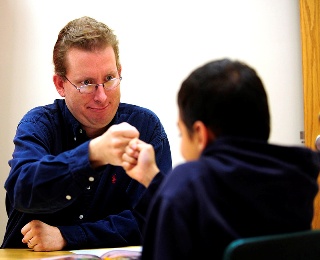Building connection can be tough but is one of the most imperative factors in teaching classes where your students feel supported, seen and acknowledged. For you as a teacher, teaching classes where you are building connection is challenging except rewarding in a way that is almost beyond description.
Build connection through-

-Giving alignment tips that specifically address what you see: If you notice someone has a knee further than a heel in Warrior 1, advice they stack their joints. If you notice someone's face is completely scrunched up in bow, propose relaxing the face. Chances are the suggestion would be helpful to more than one student and the individual student would feel acknowledged.
- Sharing from your heart: This is a topic all it is own but generally speaking, when you share your own thoughts, not to speak about yourself other than to inspire and educate, you construct connection. People will sense if you are trying to be someone you are not. While you share from the heart, you inspire your students and show yourself. Through this action, you can build connection.
- Allowing for space and silence: while most people come to yoga class, they are tired, over-stimulated and stressed. They are looking for exercise, perhaps they are passionate about yoga or maybe they are new to the practice but in any event, they most probable are not looking to be talked at for 90 minutes. When you give them some space to hear their breath and quiet their mind, you're giving them a chance to build connection with you, with themselves and also with class as a whole.
Assisting students: Various students, so far as you are creative with language, have a hard time understanding alignment cues. When you approach a student (with a goal of compassion and understanding, not just correction), you build a connection with that student by showing them your aim is to help them understand and experience yoga.
Disconnection can happen when-

You have a set agenda for what you will teach despite what is right in front of you: It is great to have a plan, a set flow and even a plan for what you'll read after class (if you do that kind of thing). But when you go into a class full of people, not knowing who will be there, how they will be and charge ahead with your schedule, that could be a disconnect from what is happening in the moment. Have your plan however be ready to change it if you need to. This can be something alongside the lines of slowing it down, adding more pace, dropping some poses, adding more personal instruction.
Teaching with your back to the class, from back of the room or practicing with the class: This is a tricky one since in many instances; any of these techniques can be very effective and useful so I should add that disclaimer. Other than, in general, once you can't see your students, it is can be a challenge to build connection.
You go on auto-pilot, trying to cram in as much instruction around alignment as likely: We want our students to get it but once we start overwhelming them with alignment tips, they check out. They are by now overwhelmed when they get there and throwing ten tips in long sentences at them whereas in Warrior I can be too much.
Telling your students what they have to feel: We teach from our own experience of yoga in our body, alongside with the understanding, as a teacher, of intention of the pose. Downward Facing Dog focuses on stretching the spine and feeling length in hamstrings but it is common for many students to feel pain in their hands, rounding in back and stress in the legs. When we state: "Feel length in your spine" we imagine they can get there. Instead, we can give alignment tips to help them get there and advice what they might feel. This can be even more challenging when we speak to the relaxation they may feel.
Building connection is one of the finer techniques to expand as a teacher but can lead to some rewarding moments and returning students. Have faith that showing yourself, being seen as a person and speaking from heart are all within you to do, along with presenting solid, brief instruction. This can be a great foundation for building relationship. One last thing is that don't forget humour. Sharing a funny story or something humbling about yourself or life in common can keep things light and bring smile to both your face and those of your students. What a great method to build connection.